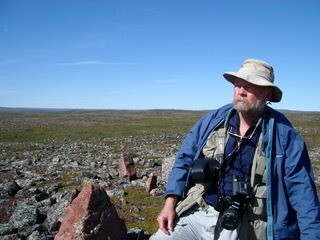#25 Around the Campfire; What Technology Does to Impact in I=PAT
In 1974, physicist John P. Holdren and biologist Paul Ehrlich, then both at Stanford University, set down in Science the key scientific formula of our time: I=PAT. Paul and Anne Ehrlich later spelled out what it means, “The impact of any human group on the environment can be usefully viewed as the product of three different factors. The first is the number of people. The second is some measure of the average person’s consumption of resources….Finally, the product of those two factors…is multiplied by an index of the environmental disruptiveness of the technologies that provide the goods consumed.…In short, Impact = Population x Affluence x Technology, or I=PAT.” For the long-term health of the tangled web of life, I=PAT is more meaningful than E=MC2. I see Impact (I) as the harm we do to other Earthlings, or as ecological wounds. Others, such as the Ehrlichs, may see Impact as harm to the life support system Earth gives Man.
In the camps of resourcism, environmentalism, and conservation, many of those who scoot overpopulation to the back burner or take it off the stove altogether yet believe that we must live within carrying capacity, that we must lower our Impact (I). But they believe that the way to do this is to lower Affluence (A) in the formula I=PAT. Others believe that technology (T), instead of heightening I, is how we can keep Impact down while we grow A and pay no mind to P. These technological optimists are cornucopians; many resourcists and environmentalists as well think that Technology can do much of this wonderwork. Even the Sierra Club has earnestly deemed that Technology is a whopping big answer for our woes. The cover and leitmotif of the July/August 2005 issue of Sierra magazine was “Can Technology Save the Planet?” Carl Pope, at the time executive director of the Club, wrote in his opening column:
The planet cannot sustain 6 billion humans aspiring to better lives without 21st-century solutions. We need the services of science and technology, and the skills of engineers. We need to enlist human genius to solve problems, not merely to increase profits. Our role as environmentalists increasingly will be to make sure the appropriate rules and incentives are in place, and then stand back and let the engineers get to work.
I don’t know about you, but standing back and letting the engineers get to work scares the daylights out of me.
Moreover, I think the most frightening and awful problem “human genius” could solve would be energy: to craft a limitless, clean, cheap source of energy for Mankind. With that we would domesticate Earth beyond any sci-fi wet dream.
In truth, higher Technology can hike carrying capacity, letting both Population and Affluence rise. When we get down to it, this is the true saga of Man, going back not only through the 50,000-plus years of Homo sapiens but even further back to earlier Homos, as archaeologist Steven LeBlanc shows so well in his outstanding book Constant Battles. However, while technology can stretch carrying capacity, it does not soften Impact. It shoots up Impact.
Click on the attachment below to read the entire “Campfire.”
Dave Foreman is the founder of The Rewilding Institute, co-founder of The Wildlands Project and Earth First!, and author of several acclaimed books on wildlands conservation. Books: Rewilding North America | Man Swarm: How Overpopulation Is Killing The WIld World | Take Back Conservation …among several other Rewilding books you can find here. [Photo: Dave Foreman in the barren grounds of Nunavit, Canada © Nancy Morton]


